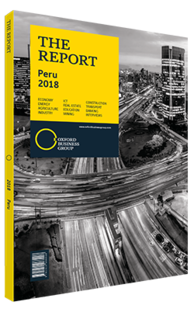Juan Carlos Salem Suito, General Manager, SANNA : Interview

Interview : Juan Carlos Salem Suito
To what extent did the floods caused by the El Niño weather pattern in the first quarter of 2017 affect the health care sector?
JUAN CARLOS SALEM SUITO: The floods of 2017 altered the natural conduct of epidemiology in the cities. The pattern of rains and plagues were different than in other years. Indeed 2017 was an atypical year for the health care sector and the country as a whole. In some regions clinics flooded, and those clinics that were not flooded were serving far beyond their capacity. The entire situation had an impact on the natural performance of the private sector.
It is the investments in services, infrastructure and strategic alliances that play a fundamental role in reducing the impact of emergency situations such as those lived during the first months of 2017. Furthermore, having the existing support structure helps us to plan ahead of contingencies, thereby minimising the impact of natural disasters.
In addition, high-quality systems are attuned so that in the event of a natural disaster or emergency, the higher volumes of unexpected patients are able to be attended to in a proper manner.
What roles can health care centres play in enhancing efficiency in the sector?
SALEM: As road traffic in Lima continues to worsen, the more people choose to stay in their local areas of influence. Considering this, medical centres respond to the need to improve medical attention. In the sector there is a principle that says that the complexity of a disease must match that of the resolution of the institution. For example, a patient with a flu should attend a medical centre appropriate for ambulatory treatments. But if the patient needs a transplant, the medical facility should be equipped for transplants, and so on. If medical institutions are not specialised in this manner, patients who arrive with less complex health concerns will be assigned a lower priority.
However, if medical institutions are divided into areas of practice, service and efficiency is enhanced. The weight of investments needed for a low complexity centre is lower, and so through segmentation, financial resources are optimised. Therefore, the primary goal is to integrate different centres and institutions into one system – this should not be exclusive to the private sector. In fact, the public sector is attempting to do this through reforms that have the vision to build and strengthen networks, but lacks implementation. Considering the sector’s complex nature and its financial, human capital, equipment, fixed assets and supply requirements, optimising investments becomes a key concern.
How important do you think it is to integrate the country’s different health care coverage systems with its various service systems?
SALEM: Health care reform should focus on enhancing hospital efficiency first, as doing so is imperative to maximising the use of public resources.
After this is done, then one can begin analysing how to integrate the different systems. It is important to point out that Peru’s health care system is composed of five different parts.
First, there is the public health care system that is financed through taxes. The second system is the social security system, known as Essalud, which is financed through social security contributions. The other systems include the Armed Forces health care system, health care provided by health service providers and finally private insurance companies.
There is not a great deal of integration between these systems, a situations which creates inefficiencies. Although reform is showing glimpses of the cross-hiring of health care regimes, portability would enhance integration. Nevertheless, the approach of the reform is wrong, as it should first focus on enhancing the efficiencies of hospitals.
You have reached the limit of premium articles you can view for free.
Choose from the options below to purchase print or digital editions of our Reports. You can also purchase a website subscription giving you unlimited access to all of our Reports online for 12 months.
If you have already purchased this Report or have a website subscription, please login to continue.

